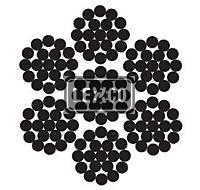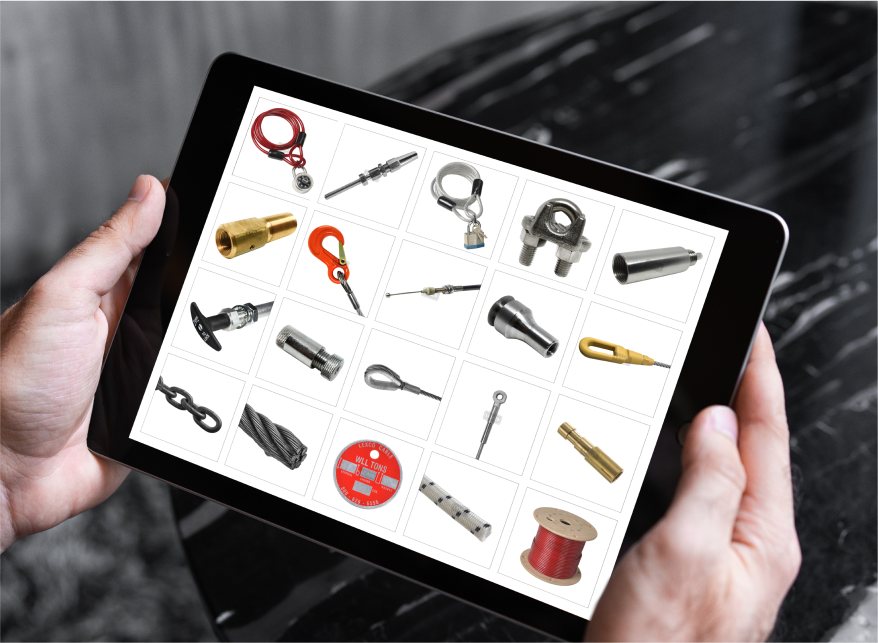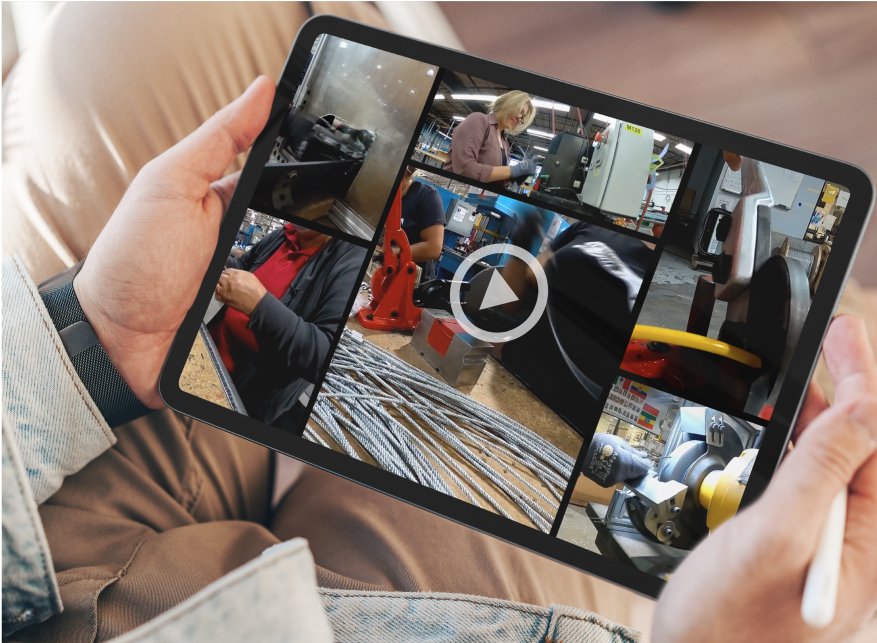
Cutting Steel Cable and Wire Ropes Cleanly
Steel cable and wire rope are useful in both large and small-scale applications. On the small-scale side, wire ropes and steel cabling can be useful for applications in both commercial and consumer tasks, such as towing trailers, boatlift cable assemblies, and cable winches; they can even be found in cable exercise machines. If you plan to cut or modify wire rope and steel cable, it is important to understand how to do so properly.
Introduction to Steel Cable
Steel cables are made from layers of steel wires twisted into strands, which are then combined with other strands and all twisted around a core. That core can be a fiber rope, a single strand like the strands wrapped about it, or even another cable with its own core and strand patterns.
Steel cable is designated by its strand pattern, size, and material. A 7×7 SS cable is 7 strands wrapped around a core, each strand having 7 wires, all made of stainless steel. Likewise, a 7×19 cable is 7 strands each of 19 wires. A 7×7 cable will have more abrasion resistance due to its larger wires compared to a 7×19 cable of the same diameter, while the 7×19 cable will be more flexible due to its smaller wires.
Cutting steel cables and wire ropes, even in small-scale applications, can be challenging without the proper tools. There are several ways to achieve better results, and this article will discuss the proper tools and methods for how to cut steel cables.

Lexco’s chop saw uses an abrasive wheel for clean cuts.
The Importance of Clean Cuts
The potential effects of poor cable cuts are not obvious. When performance and safety are major concerns, such as with companies using steel cabling and wire ropes in their products, it is important to remain mindful of what is at stake with cut cabling.
- Functionality and Performance: Wire ropes that are improperly cut can fray. This can lead to poorly placed cables into crimps or other cable termination caps, as a frayed cable may impede insertion into fittings due to a lack of clearance.
- Safety: An improperly cut, fraying cable may result in injury due to the sharp, exposed wires.
- Longevity: A properly cut cable can be used, but an improperly cut cable might be immediately useless. In the long run, poorly cut cables might wear much faster than one with a properly cut end.
- Preventing Wire Separation: Cables can separate, even if only slightly, further from the ends. This is often called “bird caging,” where the cable deforms to leave voids in the middle of a cable run. This can compromise the performance of the entire cable. Proper cutting can avoid bird caging.
- Aesthetics: A properly cut cable, without fraying, not only performs better but looks better, too. Even if a cable doesn’t fail in its current application, a cable that is bird caging or has a frayed end just looks unprofessional.

How to Cut Steel Cables & Wire Ropes Cleanly
Since cutting cleanly is so important, it’s important to know how to cut steel cable properly. There are several tools for mechanical cutting and a process that one should follow to ensure a proper cut.
- Hand Cutters: Small diameters of steel cable can be cut with hand tools. Curved blades grip and slice cleanly through cable, though the strength of steel cabling can quickly rise beyond what hand cutters can manage.
- Abrasive Cutting Wheels: Abrasive cutting wheels installed on a metal chop saw are a common shop tool to cut cable of many sizes.
- Press Cutters: For coiled cables, Lexco can use a press to exert force down on a blade to slice through the cable while holding it straight.
It is important to remember basic safety when cutting cabling. Minimum PPE like goggles and gloves should be worn, with extra precautions taken when using powered tools.
Once you have the proper tools and the proper PPE, the cable cutting process can begin.
- Preparation: Ensure the cable is clean and held steady; a tool vice might be necessary here.
- Measure: Double check your measurements to ensure you’re cutting in the right place, then clearly mark the cut line.
- Cut: With hand tools or cutting wheels, apply steady but firm pressure to cut quickly and cleanly. Ensure that your cut follows the previously marked cut line.
- Finish: Apply any crimp ends, ferrules, or caps to keep the end from fraying.

Professional Fuse Cutting
The most effective way to cut cable to prevent fraying is fuse cutting. Fuse cutters pass a burst of electricity through a narrow cross section of the cable. This superheats the cable end and melts each side of the cut.
When the machine pulls the cable apart, each end of the cut is fused, eliminating the possibility of fraying. However, fuse cutting may result in burrs that require deburring.
Getting steel cables professionally fuse cut avoids the issues that can come from mechanical cutting. It also simplifies the finishing steps applied to the cable.
While Lexco does not sell tools for fuse cutting, we are happy to offer this service to our customers for 7×7 and 7×19 cable constructions and cable diameters up to 3/8″ inch. (Note: Fuse cutting is not available for plastic-jacketed cables.)

Conclusion
Knowing how to cut steel cables and wire ropes is important because of its impact on the performance and safety of the cabling. The process is not complicated, but it is necessary to ensure a clean cut without fraying
Lexco® Cable sells a wide variety of high-quality mechanical cutting tools to use on your own and offers top-quality professional mechanical and fuse cutting services for any type of cable. Contact us today to learn more.
To learn more about Lexco Cable’s wire rope cutters watch our product displays on YouTube.








